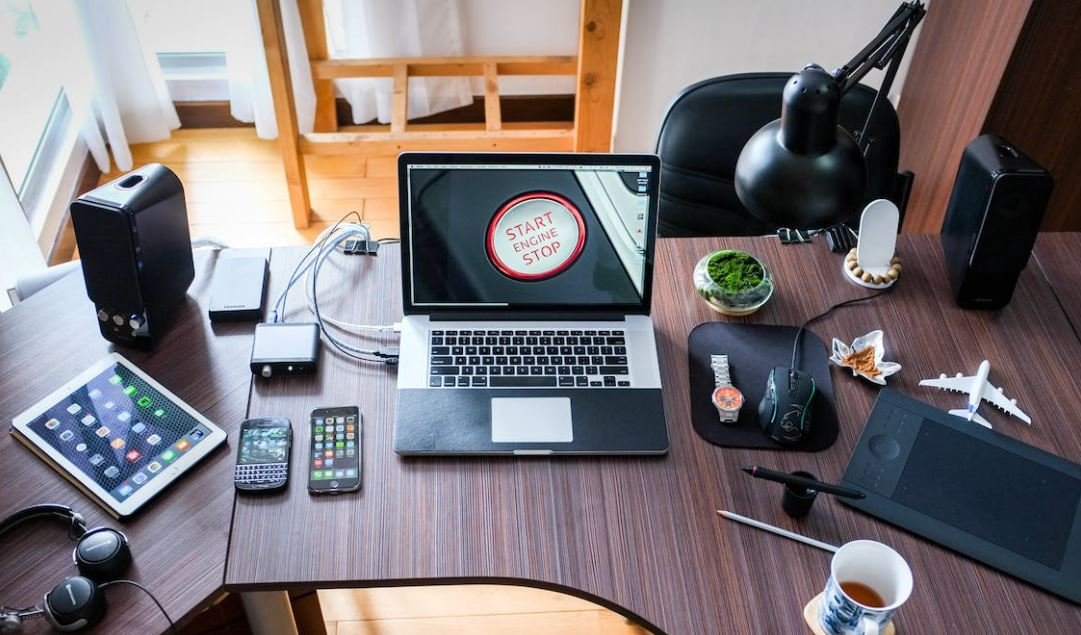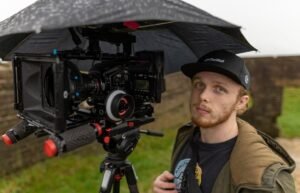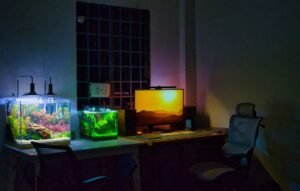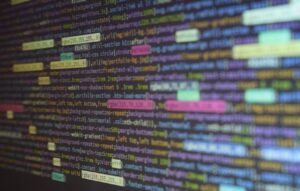Are AI Headshots Safe?
Artificial Intelligence (AI) technology has become increasingly prevalent in our daily lives, but as with any new technology, concerns arise over its potential risks. One growing concern is the use of AI-generated headshots, created by training algorithms on thousands of real human images. These hyper-realistic AI-generated portraits raise questions about privacy, identity theft, and potential misuse.
Key Takeaways:
- AI-generated headshots raise privacy and security concerns.
- AI-generated images can be exploited for identity theft.
- Regulations and user education are needed to address these concerns.
AI-generated headshots have advanced to the point where it is often difficult to distinguish them from real photographs. These images can be used for a variety of purposes such as marketing, advertising, or even creating fake social media profiles. While AI headshots can be seen as a creative tool, their potential misuse has raised ethical and legal concerns.
Experts warn that AI-generated headshots could be exploited to create fake identities for malicious purposes.
Privacy and Security Concerns
One of the main concerns regarding AI headshots is privacy. AI algorithms trained on vast datasets of real images have the potential to create a virtually unlimited number of realistic-looking faces. This raises the question of whether individuals’ images could be captured and used without their consent.
- AI headshots can violate an individual’s right to control their own image.
- There is a lack of transparency regarding the sources of training data for AI models.
- AI-generated images can be difficult to trace back to their source.
Identity Theft and Misuse
AI-generated headshots can be exploited for identity theft or fraud. As these images become more indistinguishable from real photos, it becomes easier for malicious individuals to create fake personas and deceive others.
- AI-generated headshots can be used for impersonation or fake social media profiles.
- They can be used to deceive facial recognition systems and bypass security measures.
- Machine learning techniques can be employed to identify and differentiate AI-generated headshots from real ones based on statistical patterns.
| Aspect | AI-generated Headshots | Real Photographs |
|---|---|---|
| Creation Process | Generated by AI algorithms | Taken by a camera |
| Control | Can be manipulated and created without consent | Depends on the individual being photographed |
| Authenticity | Can be difficult to distinguish from real photos | Generally considered authentic |
Addressing the Concerns
To ensure the safe and responsible use of AI headshots, regulations and user education are crucial. Several actions can be taken to mitigate the risks associated with AI-generated images:
- Implement stricter regulations regarding the use and distribution of AI-generated headshots.
- Require clear disclosure when AI-generated headshots are used in advertisements or other public-facing materials.
- Improve transparency regarding the training data sources used to create AI models.
- Develop AI algorithms that can easily detect and distinguish AI-generated headshots from real photographs.
| Regulation | Purpose |
|---|---|
| Require Consent | Ensure individuals’ permission is obtained before using their AI-generated headshots. |
| Transparency | Provide information on the source and creation process of AI-generated headshots. |
| Data Protection | Protect individuals’ personal data from potential misuse. |
In conclusion, AI-generated headshots pose privacy, security, and identity theft concerns. While these images can be used for creative and legitimate purposes, regulations and user education are necessary to address potential risks. By implementing stricter regulations and improving transparency, we can ensure the safe and responsible use of AI headshots.

Common Misconceptions
Misconception: AI headshots can be used to create fake identities easily
One of the common misconceptions about AI headshots is that they can be used to easily create fake identities. While it is true that AI technology has advanced significantly in recent years and can generate realistic-looking images of people, it is important to note that these AI-generated images are randomly generated and do not correspond to real individuals. Creating a fake identity requires much more than just a headshot.
- AI headshots are randomly generated and do not represent real individuals.
- Creating a fake identity involves more than just a headshot.
- Publicly available images can also be used to create fake identities.
Misconception: AI headshots are a privacy threat
Another misconception is that AI headshots pose a privacy threat. While it is true that AI can generate realistic images, it is important to understand that these images are not derived from real individuals. AI models are trained on diverse datasets and do not have access to personal information of specific individuals. Therefore, AI headshots cannot be used to directly identify or invade someone’s privacy.
- AI headshots are not derived from real individuals.
- AI models do not have access to personal information.
- AI headshots cannot be used to directly identify individuals.
Misconception: AI headshots are indistinguishable from real photos
One common misconception is that AI headshots are indistinguishable from real photographs. While AI-generated images have indeed become highly realistic, there are still subtle details that can give them away when examined closely. Factors such as lighting, inconsistent shadows, or strange background elements can help identify AI-generated images.
- AI-generated images may have inconsistencies in lighting and shadows.
- Background elements in AI headshots may seem unusual.
- Experts can often spot telltale signs of AI-generated images.
Misconception: AI headshots always look perfect
Contrary to popular belief, AI headshots are not always flawless. While AI algorithms are capable of creating highly realistic images, they can also generate imperfect or distorted results. Just like any machine learning model, AI can sometimes produce inaccurate or unexpected outputs. It is essential to understand that AI-generated headshots, like any form of content, are not inherently perfect representations.
- AI algorithms can sometimes generate imperfect or distorted images.
- AI is not infallible and can produce inaccurate outputs.
- AI-generated headshots, like any content, can have flaws.
Misconception: AI headshots will replace human photographers
There is a misconception that AI headshots will eventually replace human photographers. While AI technology has proven to be capable of generating realistic images, it cannot replicate the human eye, creativity, and emotions that human photographers bring to their work. AI can assist photographers in certain tasks, but the artistry and personal touch of a human photographer are irreplaceable.
- AI cannot replicate the human eye and creativity.
- Human photographers bring emotions and personal touch to their work.
- AI can assist photographers but cannot fully replace them.

AI-generated Headshots vs. Real Photographs
With advancements in artificial intelligence, generating realistic human portraits has become more accessible than ever. However, there is ongoing debate regarding the ethical implications and potential risks of using AI-generated headshots. In this article, we analyze ten key points to consider when discussing the safety of AI headshots.
The Prevalence of AI-generated Headshots
AI-generated headshots are increasingly popular in various fields, from marketing to entertainment. These digital portraits offer cost-effective alternatives to traditional photography while providing a range of creative possibilities.
Realistic Appearance
AI headshots continue to improve in their ability to mimic real human faces. They can replicate facial expressions, skin tone, and even facial hair with remarkable accuracy, making it difficult for the untrained eye to differentiate between AI-generated and real photographs.
Quality Control Challenges
One challenge with AI-generated headshots is ensuring their responsible use. Without strict quality control measures, these images may unintentionally spread misinformation or reinforce biases. It is crucial to develop guidelines to avoid potential issues.
Face Recognition and Security
The realistic appearance of AI headshots raises concerns regarding security and facial recognition technology. As AI-generated images become more indistinguishable from real photographs, it becomes harder to ensure the reliability of facial recognition systems.
Unintended Consequences in the Digital Realm
The widespread use of AI-generated headshots raises questions about online identity and the potential for misuse. These images could be exploited for catfishing, cyberbullying, or even creating fake social media profiles.
Ethical Considerations in Advertising
When it comes to AI-generated headshots in advertising, ethical implications arise. The use of AI images without proper disclosure might deceive consumers and erode trust. Regulators ought to address these concerns by establishing transparent advertising practices.
Democratization of Design
AI-generated headshots enable individuals and small businesses to access professional-looking portraits without expensive photo shoots. This democratization of design empowers aspiring professionals and entrepreneurs who may not have the resources for traditional photography.
Intellectual Property Rights
The ownership and copyright of AI-generated headshots remain a topic of debate. While AI algorithms create these portraits, the input data often comes from publicly available sources. Determining who holds the rights to AI-generated images is a complex legal question that requires further discussion.
Social Impact of AI-generated Headshots
AI-generated headshots have the potential to reshape societal expectations of beauty and appearance. They may perpetuate narrow beauty standards or facilitate inclusivity by highlighting greater diversity. Careful consideration and discussion are necessary in determining how these images shape our perceptions.
Conclusion
The use of AI-generated headshots offers a range of benefits in various fields, although it is important to mitigate potential risks. Balancing ethical considerations, security concerns, and creative possibilities is crucial to harness the potential of AI headshots responsibly. By fostering open dialogue and implementing appropriate guidelines, we can navigate the evolving landscape of AI-generated headshots effectively.
Frequently Asked Questions
Are AI Headshots Safe?
What are AI headshots?
AI headshots refer to computer-generated images of human faces created using artificial intelligence algorithms. These images are often highly realistic and can be used for a variety of purposes such as gaming, virtual reality, and marketing.
How does AI generate headshots?
AI generates headshots by analyzing thousands of real human faces and learning the patterns that make up a face. Using this knowledge, the AI algorithm can then generate new faces that resemble real human faces but may not belong to any actual person.
Can AI headshots be used for malicious purposes?
Yes, AI headshots can be used for malicious purposes such as creating fake profiles, impersonating individuals, or spreading misinformation. However, the responsibility lies with the users and ethical guidelines should be followed to ensure proper usage.
What are the potential risks of using AI headshots?
Some potential risks of using AI headshots include privacy concerns, identity theft, and the potential for creating realistic but non-consensual imagery. These risks need to be carefully considered before using AI-generated headshots in any applications.
How can AI headshots impact privacy?
AI headshots can impact privacy by potentially being used to identify individuals or create fake personas that resemble real people. This can lead to misuse of personal information and invasion of privacy if not properly regulated and managed.
Is it legal to use AI headshots without permission?
The legality of using AI headshots without permission depends on the specific jurisdiction and the intended use. In many cases, if AI-generated headshots are used for commercial purposes or to mislead people, it may be considered a violation of privacy, copyright, or identity rights.
How can AI headshots be used responsibly?
AI headshots can be used responsibly by following ethical guidelines, obtaining proper consent when necessary, and ensuring that the generated images are used in a legal and ethical manner. Transparency and clear communication regarding the origin of AI-generated content are also important.
Are there any regulations regarding the use of AI headshots?
Regulations regarding the use of AI headshots may vary depending on the country or region. Some jurisdictions have specific laws related to privacy, data protection, and the use of AI-generated content. It is important to familiarize oneself with the applicable regulations before utilizing AI headshots.
Can AI headshots be modified or edited?
Yes, AI headshots can be modified or edited just like any other digital image. However, it is crucial to consider the ethical implications of editing AI-generated content and ensure that the modifications do not lead to any misuse or harm towards individuals.
What are the benefits of using AI headshots?
Some benefits of using AI headshots include the ability to generate diverse and unique faces, cost-effectiveness compared to hiring models or photographers, and the flexibility to create customized visuals for various applications such as advertising, gaming, or virtual reality experiences.




